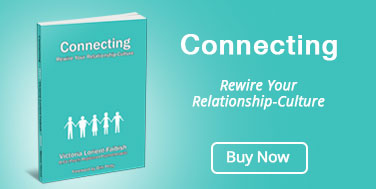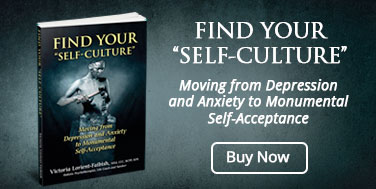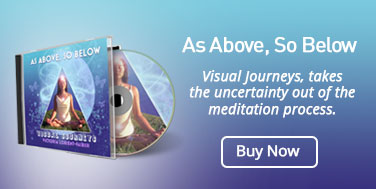published in Vitality Magazine, September 2009
“Didn’t you know that anxiety is the new normal?!” That is what a client said to me flippantly the other day. She was trying to be comedic yet we both knew this was coming from pure frustration and a feeling of overwhelm. Life today seems fraught with people who suffer from one form or another of this tormented state. I have heard clients call their anxiety a primal fear that has the power to paralyze them in a one- two punch no matter what their good intentions may be. Without management, anxiety makes life lose a sense of joy, purpose and any type of stable normalcy.
Possible causes may be rooted in the person’s childhood. For example, a lack of stability in one’s early life may create a poor foundation and the worry centre in the brain may be over activated. Also the person’s genetics may contribute to the puzzle of anxiety. Ultimately, there are many possible sources for anxiety. They are varied and at times perplexing. A childhood that is rife with violent communication, volatility, addiction and trauma (physical as well as emotional) may work on the nervous system in ways that may be causing the brain to be in a constant state of hyper vigilance and over reactivity. The brain is attempting to cope with the constantly changing landscape of a turbulent family. And since we tend to form our world view by the time we are 7 years old, this state of never knowing what is around the corner or waiting for the other shoe to drop for a child may later develop into an adult that experiences severe anxiety.
Also, quieter, less obvious family dynamics like non acknowledgment, Judgment, criticism, lack of boundary respect, emotional blackmail, passive-aggressiveness, cold, non verbal family interaction may all be potential breeding grounds for developing emotional anxiety patterns later in life. The “hard working baby” may be in action as the child perceives he or she needs to work hard for attention, acceptance, love and recognition. An urgent need for closeness and belonging evolves or a fear of abandonment unfolds which may turn into an constant need to perform, apologize, be perfect, be good, and be likeable in order to get what they seek . The anxiety of not getting what they need is there constantly as an undercurrent.
The nervous system constantly goes into full activation. The reptilian, most primitive survival part of the brain is repeatedly getting the message that life is not safe (real or perceived) and thus producing the biochemicals of trauma. This may then cause chemical imbalances in the brain causing cognitive distortions later on.
That said, there is no certainty that someone will have chronic anxiety if they have experienced the above family dynamics. People seem to deal with these types of early childhood experiences in different ways. Anxiety tends to run in families and we tend to inherit these predispositions. So if all the pieces are there, the proverbial fertile soil to develop such a condition may ensue. But not necessarily.
Anxiety is extremely uncomfortable. The person is in a physical response that appears to be uncontrollable. Sweating, stuttering, worrying, obsessing, sometimes heart palpitations, faster breathing, panicky feelings, lost feelings, clinginess, paranoia and more. Logic has a hard time surpassing these anxiety patterns. The brain has developed thick neural pathways that reflect this type of mental/emotional/physical trauma response.
If the patterns for anxiety exist in a person, it is so important to cope with this state of being with a variety of strategies so that quality of life is not gone all together. Also, the immune system of people who have anxiety can become compromised so taming this seeming giant is so crucial.
10 powerful tools to cope with anxiety:
1. Deep, slow and conscious breathing is by far the simplest, cheapest and very effective tool that can quickly move the person to stimulate the relaxation response and thus the parasympathetic nervous system when in a heightened state of being. Breathing can begin the slow but sure journey of building the relaxation neural pathways that are crucial to interrupting the anxiety auto response. Getting used to catching oneself at the beginning of an anxiety state and then consciously and deliberately slowing down the breathing will decelerate the heart beat and the mind. This will then gently shift the focus back to a safe space. There are many breathing techniques but a simple one to slow down the breathing is to slowly breathe in to a count of 3 and out to a count of 3. Slowly increase the count to 4 in and 4 out and 5 in and 5 out etc.
2. Positive, relaxing visualization capitalizes on the fact that the brain does not seem to differentiate between real or perceived events. Creating a peaceful place in nature in one’s mind like a beach, a mountain, a water fall, a garden, a forest etc. and focusing on it regularly in great detail can be so effective to calm anxiety if done habitually. The biochemistry of relaxation will ensue. I often spend time in my office facilitating the creation of this safe, peaceful space in great sensory specific details with my clients so that they can use the visual often when feeling anxious. This is a muscle like all other muscles that needs to be worked and practiced in order to stay useful and to facilitate the creation of these particularly important neural pathways that calm the worry centre down.
3. Create an Anxiety Thought Log. Recording thoughts and processing events that create anxiety on a sheet of paper or in a journal. When a situation occurs that brings on anxiety, begin to breathe in a slow way and sit down somewhere quiet as soon as possible. Begin to ask yourself a variety of questions:
a. What is the situation? Who you are with? Where are you? When did it happen?
b. What is the mood and what are all the feelings that are present during the event. Write a list down of all the feelings you are experiencing associated with the situation causing anxiety. Then rate each feeling 1 to 10 on how intense each feeling is. (increasing in intensity as the number increases)
c. Automatic thoughts: Ask yourself: What was going through my mind just before I started to feel anxious? What am I afraid of happening? What is the worst thing that I am worried about in this situation? What words, pictures, memories come up for me as I think of this situation?
d. What is the evidence that you have to support the worry and fear thoughts? Avoid interpreting other people’s thoughts. You are not a mind reader.
e. What is the evidence that does not support the worry and fear thoughts? Use logic and reality based thinking as much as possible.
f. Find other more balanced thoughts about the situation. For each negative, fearful thought you discover in the log, circle it and create a separate page that consists of the opposite, more balanced and empowered thought.
g. Rate your mood and feelings again after the thought log process. Tune in to the new feeling state that is coming about. Rate the feelings 1 to 10 once again.
4. Separate what you have control over and what you do not. Know that you do not have control over outcomes and over other people’s reactions and actions. You do have control over your own thoughts, feelings and perspectives on life. Work on those.
5. Don’t overwhelm yourself. Deal with one thing at a time. Keep life simple. Know your limitations and don’t take on more than you can handle.
6. Take supplements to assist the brain chemistry. Essential Fatty Acids are a natural mood booster and have a calming effect (At least 4000mg of EPA and DHA combined). A good vitamin B complex (100mg per B) helps to support the exhausted adrenal gland. Vitamin D (At least 2000 IU’s) is proven to elevate mood and disposition. 5Htp: This is the feel good amino acid precursor to serotonin. (100-200mg in the morning) Inositol (also known as vitamin B8 or IP6) is an excellent anti-anxiety nutrient. Taken in powdered form 8-10 grams per day ( AOR has a good powdered formula)
7. Exercise stimulates the release of endorphins and therefore plays an important role in feeling good about self and life. It helps to maintain calmness within and is a good stress reliever.
8. Become aware of your present moment. Notice your internal running commentary. Are you constantly focusing on worse case scenarios? Begin to encourage yourself to create a constant positive running commentary within yourself about life in general. Notice your inner thinking while doing mundane activities. Affirm that “Everything is working out better that you expect.”
9. Don’t rush. Leave time for yourself when going somewhere. Being in a rushed state will often trigger anxiety.
10. Get in touch with the child within you. Parent him or her as you wish you had been treated. Give your inner child what it needs: love, acceptance, relaxation, respect, empowerment, nurturing, good choices, safety and unconditionality.
All of these strategies have the potential, if used regularly and diligently, to change lives. Remember new neural pathways are the key. They need repetition to be created. Once the new pathways are developed the auto response to triggers begins to shift. The process becomes easier in time.








